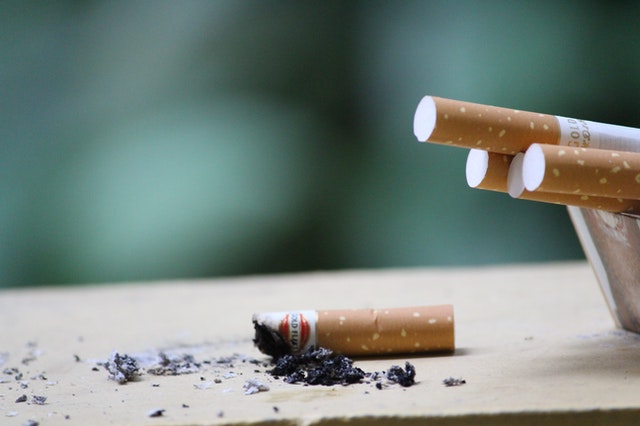It seeks objectivity, the search for truth without false prejudices, without the consequences of society and tradition. At least this is the idea. In practice, science has done something wrong on several occasions. Sometimes, scientists may disagree and need to be told that they are right and that a very simple reality applies, which is often better taken from the point of undisputed authority. Then something happens, the truth comes out, and it is completely different from what we were taught. The science of smoking, snus and cigarette smoking is a fantastic example of that. There was a time when science assumed that smoking was benign.
Modern Consensus on Smoking

For several decades, researchers have agreed that smoking is harmful to the body, even though it is extremely unhealthy and fatal. Smoking damages almost all body organs causes many disorders, and generally reduces smokers’ well-being. Cigarette smoke causes over 480,000 deaths each year in the United States. It is almost one in five deaths.
Scientific View of Smoking
In many cases, science has belittled tobacco’s harmfulness, denied its harmfulness, or traditionally encouraged smokers not to worry and continue smoking. This stretched from the mid-1800s to the first half of the 1900s. By the mid-20th century, attempts to educate Americans about the dangers of tobacco began to take hold, and there was a decline in tobacco use.
However, the Surgeon General’s report was printed on Saturday to reduce its impact on tobacco companies’ actions, showing how powerful tobacco companies were at the time. But in the decades leading up to the 1964 report, people had been much less educated about the dangers of smoking. In the 1850s and so on, several doctors and scientists claimed that tobacco had several harmful properties, but many also claimed the opposite and that smoking and cigarettes were dangerous.
Many scientists who defended the tobacco habit said it with great perseverance, often ridiculing people who warned about smoking dangers. What follows is an evaluation of several articles written by scientists, based primarily on their scientific journal, Scientific American, which exemplifies the falsehood and sometimes blatant distrust of scientific experts before people realized tobacco dangers.



 The images to be retouched are of two different types. The first type consists of old photos. Old photos that are ruined by wear and tear and weathering things require repair work. Retouching these photos can take some time. Depending on the region of the injury, retouching can take anywhere from 1 to 2 weeks.
The images to be retouched are of two different types. The first type consists of old photos. Old photos that are ruined by wear and tear and weathering things require repair work. Retouching these photos can take some time. Depending on the region of the injury, retouching can take anywhere from 1 to 2 weeks.
 When it comes to transcription security, the first step is selecting a reliable service provider. With countless options available in the market, it can be overwhelming to choose the right one. However, there are certain factors you should consider to ensure you make an informed decision. Start by researching different transcription service providers and reading customer reviews or testimonials.
When it comes to transcription security, the first step is selecting a reliable service provider. With countless options available in the market, it can be overwhelming to choose the right one. However, there are certain factors you should consider to ensure you make an informed decision. Start by researching different transcription service providers and reading customer reviews or testimonials. When it comes to ensuring transcription security, one of the most crucial steps is to encrypt both transferred and stored data. Encryption adds an extra layer of protection by encoding information in a way that can only be deciphered with the correct decryption key. Transferred data refers to files or documents sent between you and your transcription service provider. To secure this data, it is essential to use encrypted file transfer methods such as Secure File Transfer Protocol (SFTP) or Virtual Private Network (VPN).
When it comes to ensuring transcription security, one of the most crucial steps is to encrypt both transferred and stored data. Encryption adds an extra layer of protection by encoding information in a way that can only be deciphered with the correct decryption key. Transferred data refers to files or documents sent between you and your transcription service provider. To secure this data, it is essential to use encrypted file transfer methods such as Secure File Transfer Protocol (SFTP) or Virtual Private Network (VPN).

 A trip to the mountains involves long walks and exciting activities such as climbing, hiking, and walking through a river. In this scenario, you need to make sure you pack your most comfortable shoes and socks. Pack your hiking boots if you want to walk in the mountains. If it is only for hiking, choose thick shoes. A pair of wool socks can keep your feet warm all night long.
A trip to the mountains involves long walks and exciting activities such as climbing, hiking, and walking through a river. In this scenario, you need to make sure you pack your most comfortable shoes and socks. Pack your hiking boots if you want to walk in the mountains. If it is only for hiking, choose thick shoes. A pair of wool socks can keep your feet warm all night long. Take your camera with you to turn this perfect beauty into a lifelong memory. The quality and resolution of the photos taken with the camera are unmatched by those who work with smartphones. You can relive the best minutes in the mountains by looking at the pictures you have taken, and this is something that nothing can replace. Also, take a cell phone power unit, a couple of extra batteries, and a camera memory card.
Take your camera with you to turn this perfect beauty into a lifelong memory. The quality and resolution of the photos taken with the camera are unmatched by those who work with smartphones. You can relive the best minutes in the mountains by looking at the pictures you have taken, and this is something that nothing can replace. Also, take a cell phone power unit, a couple of extra batteries, and a camera memory card.